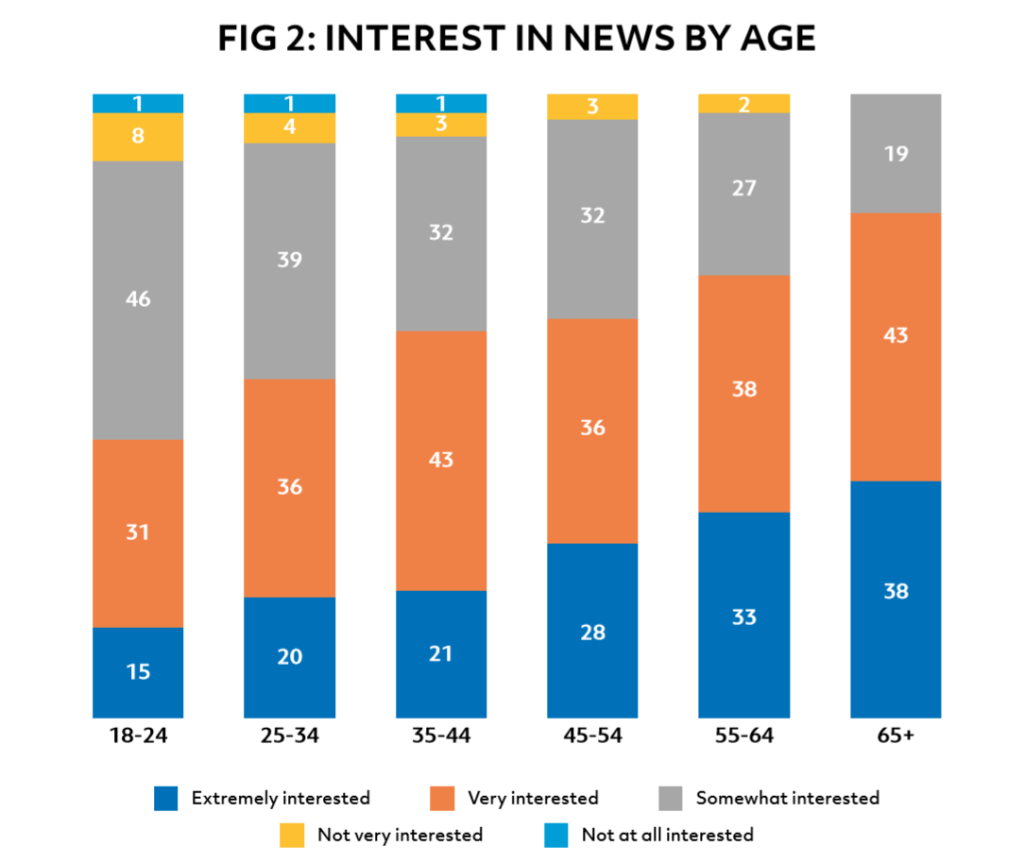We are at the edge of unstoppable alternation of the media into digital. After the ongoing COVID-19 pandemic, there have been some changes in the printed media almost as in Ireland as all around the world. There were inevitable pay cuts almost around 20% of the media workers. It can be said that the pandemic caused an imperious crisis. Under these circumstances, the digital media is a vast field which gives journalists the opportunity to be a freelance journalist and power to the audience to control the choice of the news sources. Thus, digital media is the new black now for both the audience and the content creators. Therefore, the Irish digital media landscape analyses became important than ever before. So, this article aims to show a path way for Irish Journalists who consider to contribute to digital news arena.

As per the Digital News Report in Ireland 2019 of DCU Institute of Future Media and Journalism and Broadcasting Authority of Ireland cooperation, is intended to comprehend Irish news purchasers’ utilization and estimation of news over various variables, the outcomes are intelligent of wide utilization slants in Ireland and are not likened to the information gathered by news associations with respect to their individual digital readerships. The research was directed online in January/February 2019. The example of the report is intelligent of the populace with access to the web. In Ireland, this is about 94 per cent of the populace.
The 2019’s report comes against the worldwide scenery of rising populism and polarisation just as increasing worries about giant tech companies and their impact on society and, indeed, democracy. In Ireland, a portion of these worries are not as articulated as somewhere else, however, there is a familiarity with the troublesome setting made by Brexit, Trump, populist political talk, and the spread of disinformation and detest discourse encouraged by the tech giants.
In facing these patterns, Irish news associations are tested to report occasions without all the while assuming a job in intensifying such negative substance. Generally speaking, unmistakably political polarization has made more captivated news conditions with reducing levels of trust. At the point when joined with rising volumes of disinformation and the purposeful endeavours of some to scrutinize all journalistic veracity, these conditions bring up numerous issues about how to convey reasonable and adjusted revealing that supports as opposed to sabotages the benefit of everyone. In a further test, news associations must do this in a setting where their plan of action is sabotaged by the sheer size of the digital giants and their capacity to hoover up the tremendous majority of advanced publicizing incomes.
A year ago in 2018, Facebook declared significant calculation changes that diminished the measure of news coverage showing up in its news channels. Simultaneously, there is a move towards news conversation inside close or private applications, for example, WhatsApp. This may, in certain occasions, make it harder for disinformation to spread, yet it likewise makes it harder for researchers and regulators to track and tackle the issue. All the more extensively in the news media area, there are progressing inquiries regarding the degree to which news coverage is considering the incredible answerable and, independently, there are continuous endeavours to develop and discover better approaches for contacting crowds. Irish newsmakers are exploiting the Irish love of audio to rotate towards digital broadcasts such as podcasts. This is a promising turn of events despite the fact that a definitive commitment of digital broadcasts to the reality is as yet muddled.
Get to know the addressee
In a nutshell, probably the most significant discoveries from the research include:

The first and powerful result is about news interest in Ireland. Niamh Kirk is a researcher at DCU’s Institute for Future Media and Journalism points out that “Younger people, much like everyone else, are getting more news than previous generations have ever have been exposed to. Recent shifts in Irish society have been in part shaped by increased engagement from younger people. It is an old cliché that young people are ignorant of news or politics. Although the engagement is lower than older generations, there is still a substantial percentage interested in it and accessing it daily, and want to see more topics that relate to their lives. Future participation depends on their adaptation of evolving technologies as well as how the news media cover and distribute topics of interest to younger generations.” This is promising for a fresh start if you intend to be an online journalist.

Plus, Irish news consumers, in a similar manner as those somewhere else, get to news a few times each day and this is developing each year. As far as online stages, Facebook is the most mainstream for getting to the news in Ireland and over the EU. Curiously, WhatsApp use is higher in Ireland than the EU normal.
In any case, the numbers are still moderately low at 15 per cent contrasted and non-Western nations, for example, Brazil (53%) Malaysia (half), and South Africa (49%). In spite of the developing ubiquity of shut informing applications, not many clients are surrendering Facebook completely. It remains the prevailing informal community and is by a wide margin the most significant interpersonal organization for news.

Additional categories distinguish how individuals devour news. Traditionalists are the individuals who mostly expend news by means of papers, radio and TV. We can see that this conduct is in slight decrease over late years with more prominent quantities of individuals relocating towards advanced wellsprings of news. Be that as it may, it is the purported “cream” bunch which is predominant. As the name recommends, these are individuals who devour news both from computerized and customary sources.
The quantity of unadulterated digitialists is staying level drifting reliably underneath 30 per cent. Obviously, this gathering is ruled by more youthful age bunches with approximately 41 per cent of under 24s being computerized as it were. More seasoned associates are additionally moving towards computerized or possibly the creamer model; there are five per cent fewer traditionalists among the over 65s in 2019.
It additionally gives the idea that wealthier individuals are exchanging towards advanced. In reality, the majority of individuals with a family pay of over €70,000 are digitialist. In any case, the vast majority are in centre compensation sections and devour both conventional and digital media. Instruction likewise has an effect, with those with more significant levels of training (degree and higher) well on the way to be digitalists at 32 per cent, contrasted and 19 per cent of those with lower levels of instruction.
The image turns around precisely for the individuals who devour just customary news media with 34 per cent of those with lower levels of instruction in this position and 19 per cent of those with more elevated levels of education.

The smartphone is continuing its inexorable rise and is now the dominant way for most people to consume news at 56 per cent, far ahead of the EU, the UK and North America. Tablets have flattened out at around 12 per cent of the market and may even be declining. But the big decline is among laptop and desktop computers. Over the past three years, the use of these devices for news consumption has diminished from 50 per cent in 2017 to just half that, or 26 per cent, in 2019. Therefore, it is very important to consider to choose the mobile-friendly designs for blogs or websites while designing.

Not many individuals maintain a strategic distance from the news; only six per cent state they regularly do as such. Obviously, this is obvious given this is an overview of news shoppers. The figures are extensively in accordance with midpoints over the EU, UK and North America. These might be identified with the 34 per cent who end up exhausted by news nowadays, however, this is lower than in comparable markets where the figure is more like 30 per cent.
One explanation behind the absence of trust is familiarity with disinformation. More than 60 per cent of Irish individuals are in any event to some degree worried about what news is genuine, higher than the EU normal of 51 per cent yet beneath the 70 per cent of news customers in the UK and 64 per cent in North America. Such concern can be a reasonable disposition in reality as we know it where disinformation is overflowing, yet making vulnerability is a purposeful methodology of disseminators who advantage when there is disarray about what is valid and what isn’t.
Irish people are fundamentally more uncertain than others to choose not to share a story as a result of worries about precision and marginally more outlandish than others to quit utilizing news sources because of worries about exactness. Nonetheless, Irish individuals are bound to talk about stories with individuals they trust.

Video streaming is the paid help of decision for Irish news buyers. Inquired as to whether they could just buy into one assistance, the modular classification was a video gushing help, for example, Netflix at somewhere in the range of 35 per cent of the example. Online games, music and news all arrived in a poor second with news at only 9 per cent. This example held universally; video spilling is consistently the most well known, albeit more so in Ireland than anyplace else in our comparator nations, other than North America.

Commenting, Broadcasting Authority of Ireland chief executive, Michael O’Keeffe said: “The rapid pace at which technology continues to change the media landscape around the world presents particular challenges to those charged with ensuring that the regulatory environment remains appropriate. Strong digital literacy amongst Irish media consumers is essential in dealing with the challenges of the evolving media landscape. Enhancing this competency is one of the BAI’s strategic objectives and is an area in which we are taking a leadership role through the Be Media Smart Initiative. ”
Director of FuJo, Dr Jane Suiter added: “Access to quality journalism is essential to a functioning democracy. While there is a very slow increase in the numbers of Irish people willing to pay for news online, overall, Irish people’s interest in news remains consistently high and their questioning of the veracity of news sources is encouraging, but needs to increase. Quality journalism is important to a cohesive society and in this turbulent time, news providers must continue to champion the idea that quality online news is a necessity, rather than a luxury.”
Thusly, we are on the edge of a change, with the knowledge of the audience behaviour, journalists may trace a new road both for themselves and the news audience. Those results will indeed change when it comes to the year 2020 but even looking to 2019 results there is a trend that we cannot simply ignore. Let’s hope that the new road will be purified from disinformation and fake news. We can build a fair and effective network of the new version of communication and presenting the news.
There is a video about the concerns growing about traditional media:
https://www.rte.ie/news/2020/0411/1130008-covid-19-media-landscape/
Share your ideas, maybe your ideas will be an inspiration to somebody. It is indeed valuable to share, don’t hesitate to comment below.













